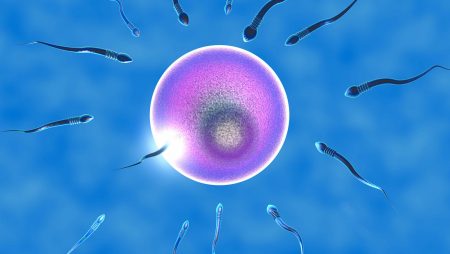What is PGD?
Genetic Screenings are very important to increase the success of IVF treatment and maximize the likelihood of a healthy pregnancy. These scans performed in our laboratory provide early detection of potential genetic disorders by comprehensively analyzing the genetic structure of embryos. In this way, we make it possible to transfer healthy embryos, significantly increasing the chances of families having healthy babies. In addition to ensuring that expectant parents have healthy babies, we also perform gender selection for genetic screening purposes.
Pre-pregnancy genetic examinations of embryos developed through IVF treatment are now possible and widely practiced. This diagnostic method, which is used to determine whether the embryo carries any chromosomal disorders or genetic diseases while it is still in the embryo stage, enables the creation of healthy generations. PGD is also a suitable method for prospective parents with genetic changes that cause cancer syndromes.
Another purpose of PGD is to identify possible genetic defects in the embryos of expectant parents who will undergo in vitro fertilization treatment due to infertility (i.e. infertility).
This process offers couples the chance of a healthy pregnancy and helps prevent the transmission of certain genetic diseases from generation to generation.
PGD (Preimplanstation Genetic Screening) Methods
1. Ngs (New Generation Sequencing)
The most advanced genetic diagnostic method used today is NGS, also called next generation sequencing. This comprehensive chromosome scan, which screens approximately 20,000 genes in embryos, scans all 23 pairs of chromosomes, including the sex chromosomes.
With the NGS method, genetic problems at the chromosome level are screened quickly and effectively before pregnancy.
It is one of the most advanced methods of today’s technology and although it is more expensive, it is highly preferred by families.
The IVF process with the NGS method is not different from the normal IVF process. The embryos are frozen one by one and the embryos are biopsied on the 5th day.
In this method, which gives results in about 3-4 weeks, embryo transfer is left to the following months.
2. Fish (Fluorescence Insitu Hydridization) Method:
It is the most practical, fastest and less costly PGD method. Cells are stained in the genetic laboratory using special kits and examined under a fluorescence microscope to identify common anomalies such as chromosomes 13, 15, 16, 17, 18, 21, 22, X -Y.
The FISH method, which examines a total of 9 chromosomes, has been used since the 1990s and although it is very powerful, its coverage is narrower than other methods. Therefore, it is generally used for sex selection.
3.Acgh (Array Comperative Genomic Hybridization) – Microarray Based Comparative Genomic Hybridization
aCGH is the best genetic screening test in which 46 chromosomes are examined. This method is suitable for expectant mothers with recurrent IVF failure or recurrent pregnancy loss. It is fast and highly reliable with a lower error rate in screening for genetic disorders and is more preferred in screening for existing disease as it targets a specific set of DNA. aCGH has proven to be a powerful method for detecting chromosomal abnormalities that are not visible under a microscope, especially in individuals with birth defects. In addition, aCGH can detect 10-20% of chromosome abnormalities in children with developmental disorders and intellectual disabilities.
However, because of the need for prior knowledge, it cannot directly detect what is not being searched for.
It is therefore not a suitable method for gender selection.
The IVF process with aCGH method is like a normal IVF process. The embryos are biopsied on the 5th day of the embryos and the embryos are frozen one by one. The cells are sent to the genetic laboratory. As a result of the examinations made by genetic experts, the result is known in about 3-4 weeks and embryo transfer is left to the following months.
4. PCR (Polymerase Chain Reaction) Method:
With this method, single gene diseases such as thalassemia (Mediterranean anemia) and hemophilia are usually screened. Cells taken from embryos by biopsy are sent to the genetics laboratory.
Here, the cells are analyzed to determine whether the embryos are affected by the disease after gene region duplication and gene sequence determination.
This method is preferred when sex selection is to be made in patients with gene diseases in which mutations have already been identified.
The cost is slightly higher than the FISH method.
The IVF process with the PCR method is just like a normal IVF process. The embryos are biopsied on the 3rd day of the embryos and the cells taken are sent to the genetic laboratory. As a result of the examinations made by genetic experts, the result is determined within 24-36 hours and transfer is planned on the 5th day according to the result.
5th Trophectoderm Biopsy (Day 5 Blastocyst Biopsy)
It is a kind of rapid genetic determination method. On the 5th day of embryos, cells taken by biopsy method are subjected to rapid genetic testing and results are obtained within two hours. The transfer process can take place on the same day and the IVF process is just like a normal IVF treatment process.





